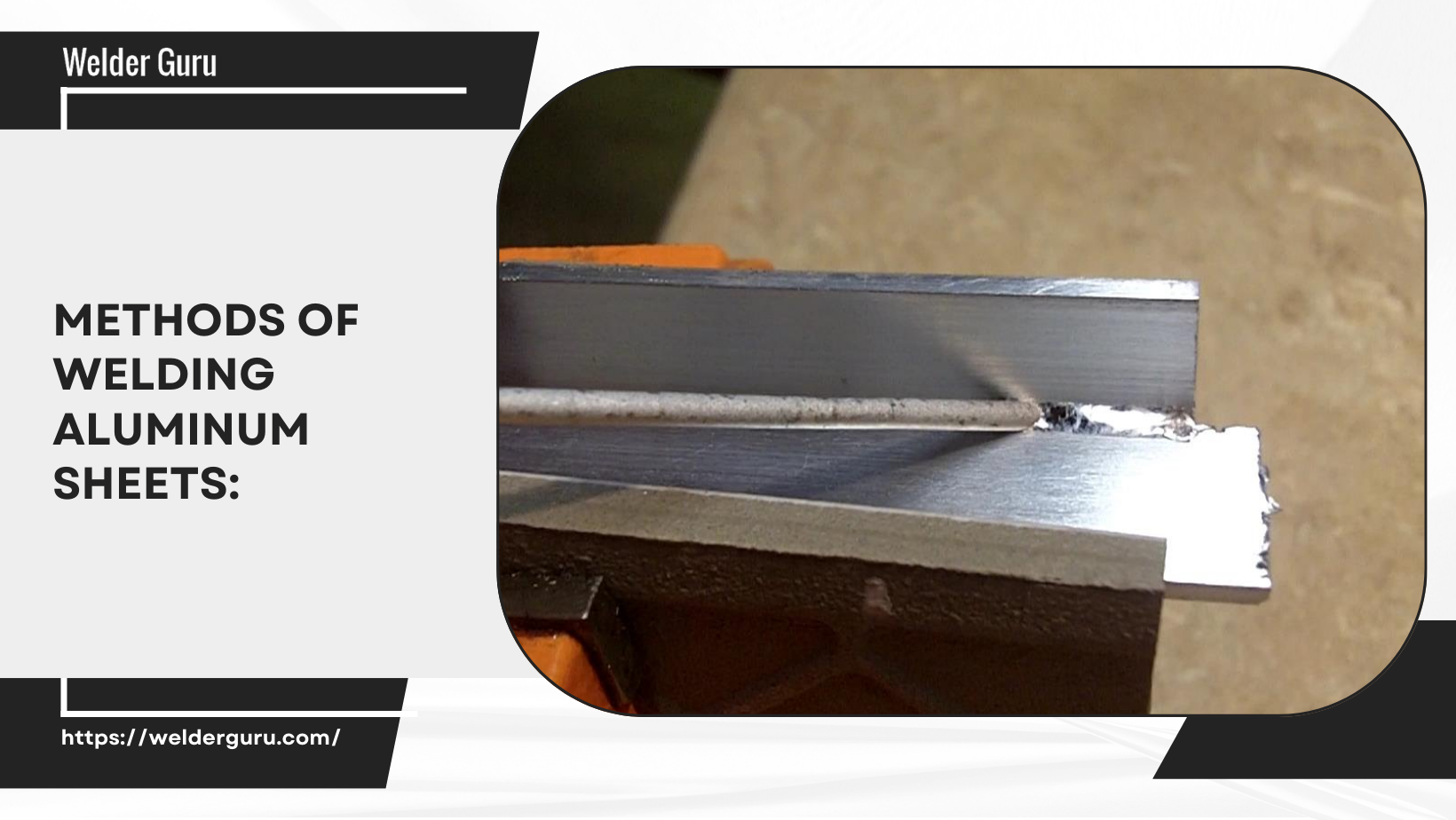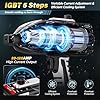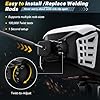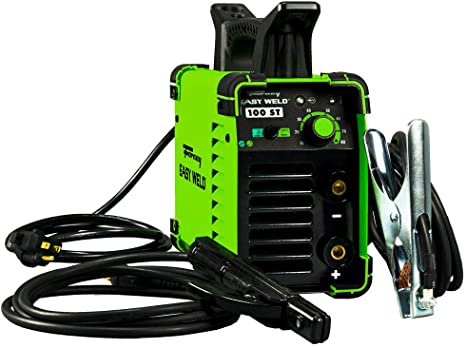Portable Welding Machine 110V Handheld: Portable Hand Held Welder Machine with 20PCS Rods & IGBT Inverter 5 Variable Current Adjustment - SUNSIMIAO Electric ARC Welder Gun Fits for 3/32" Wire Rods
10% OffAluminum is a metal used to make any sheet due to its silvery, shiny, and lightweight properties. It is a non-ferrous metal having a bundle of unique characteristics. Aluminum is used to build aluminum-coated sheets through which much machinery and other materials are prepared.
- None are ferrous (don’t get rusted easily).
- low-density (lightweight)
- Deformable (can be molded easily)
- Corrosion-free.
- Excellent heat and electricity conductor
- It has a shiny surface.
- resistant to sparks. (When the electricity voltage is conducted through them, they cannot produce a spark).
This is the most frequently asked question by welders. It is due to the ability of aluminum molecules to arrange themselves in such an astonishing pattern that when molded to make a sheet or any other material, it does not break under low pressure.
So why do we call aluminum ductile metal?

It is because, under high pressure, aluminum molecules get under extreme tension that they cannot bear, so their molecules disassociate from each other. The aluminum piece does not remain intact. This is the primary reason for the ductility of pure aluminum metal. Aluminum has changed statistics so that it is more suitable for making various objects, including cutlery, dishes, furniture, and metallic sheets, which are majorly used in highly sculpted structures such as making vehicles, building roofs, windowpanes, and many other systems. Read more about fixing the exhaust pipe without welding.Uses of aluminum:
Aluminum sheets:
Aluminum sheets are made with a mixture of pure aluminum metal and the consumption of various other metals to neutralize their power toward attaining their pieces of metal sheets.
These sheets are then used for making various vehicles and house-building blocks with kitchen cutlery products. These sheets have an extremely intense role in building up the environment.
Brittleness of aluminum:
As discussed earlier, aluminum is highly ductile; under high pressure, its elements get separated, causing a rupture or depression in a sheet. When aluminum surfaces get ruptured, they require some force to get attached back again, and for this purpose, we use the welding technique.
Aluminum welding:
When aluminum sheets, combined with different metals, are subjected to any stress, the surface may become turned due to higher excitation of particles. For joining those two cut edges, welding is the method to be opted for to attain the signified, united whole. Although soldering and brazing are also techniques for doing this task but joining metal surfaces, the best option is to go for welding. Read more about weld coast Iron.
How much is an amp required for welding aluminum sheets with stick grinding?

To establish a sustained aluminum sheet, it is necessary to provide appropriate voltage and amp to the piece to have a strong entity. Electrodes need 50 to 80 amperes per 1/8 inch of the thick aluminum sheet. 5/32 inches thickness requires 100 to 160 amperes to work more efficiently and weld the material with more grip. Read more about welding Vs soldering.
Methods of welding aluminum sheets:

Aluminum can be welded by machines, tubes, and stick welding apparatus. Each has properties that are suitable for creative pieces.
For big sheets, powerful machines such as Robert and Lincoln are required because they can be moved over the surface and produce a deliberately clean and studious whole. As bid sheets have more surface area, machines can operate on them more efficiently, providing all the services needed, including grinding, filling, razing, and leveling the surface.
For medium and angled sheets, due to the angle and medium size of the surface, tubes, torches, and taxing capacities are used to make angled surfaces more presentable and precise.
For small and thin aluminum sheets, sticks of various types are used, each having a different tip precision and thickening of the stitch depending upon the width of the sheet.
Thin aluminum sheets are more efficiently welded at lower temperatures and with more dryness. The best suitable environment for welding is to have a dry setup, high temperature, more precise tools, and the efficiency of the welder. So, for precision purposes, thin aluminum sheets are only welded by sticking more accurately and cleanly. we also fix the exhaust pipe without wilding.
The maximum thickness of 2 to 3 inches of the aluminum sheet can be welded through the stick method. If we weld the large and thicker aluminum sheet, it causes many difficulties as it is not a professional method.
The disadvantages of welding thicker sheets of aluminum by the stick method:
- It will be messy inside.
- It will be more time-consuming.
- It will not provide an uneven surface.
- Efficiency will be low.
- It can be more costly.
- It will require much effort to bind larger, thicker sheets through thin-tripped sticks.
Advantages of thin welding sheets with the stick method:
To weld thinner aluminum sheets, using a stick is the best way to attain high precision of the welded substance. The following are some advantages of thin welding sheets of aluminum with rods:
- It is economical.
- more feasible.
- Provides a neat surface.
- It’s always less time-consuming.
- Efficiency is more significant than thin sheets.
Considering all these advantages and disadvantages, it is clarified that welding thinner sheets of aluminum with a welding stick is much more appropriate and efficient, thus providing a neat and clean metal welded surface.
Conclusion:
From all the data mentioned above, it is stated that if we must weld the thickened aluminum pipe using a stick is not an appropriate method as it does not give a finished look. So for it, different machines and tools are used to maintain the balance and features of the parent material. For welding thin and angled aluminum sheets, welding by stick is way more acceptable due to its more efficient, finished look. Thus, the stick is also optional and work-oriented just for some cases to be suited and get better through them. Various types of sticks are thereby made to maintain the quality and uniqueness of the material.
Related Links:
- https://www.wikihow.com/Weld-Aluminum (By Wikihow) (October 25, 2022)
- https://www.wikihow.com/Solder-Aluminum (By Wikihow) (April 13, 2020)
- https://www.wikihow.com/Adjust-a-Welding-Machine (By Wikihow) (December 8, 2020)
- https://www.wikihow.com/Perform-a-Butt-Weld-Using-Electric-Arc-Welding (By Wikihow) (May 6, 2021)
- https://www.wikihow.com/Clean-Aluminum (By Wikihow) (February 3, 2021 )
- https://en.wikipedia.org/wiki/Aluminium_joining (By Wikipedia)
- https://en.wikipedia.org/wiki/Submerged_arc_welding (By Wikipedia)
- https://en.wikipedia.org/wiki/Welder (By Wikipedia)
- https://en.wikipedia.org/wiki/Stud_welding (By Wikipedia)
- https://en.wikipedia.org/wiki/Aluminium (By Wikipedia)














